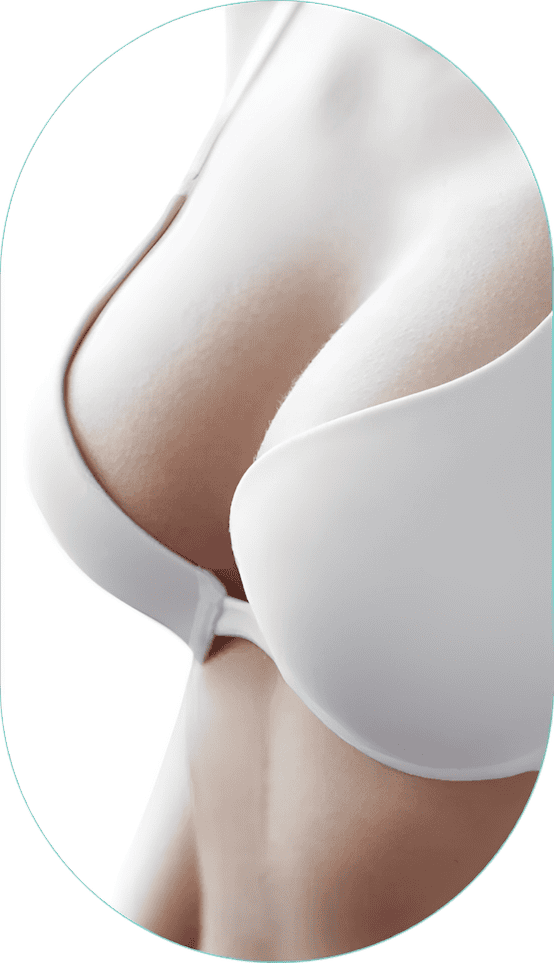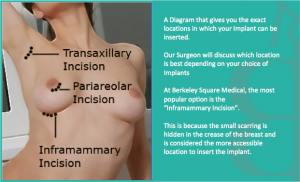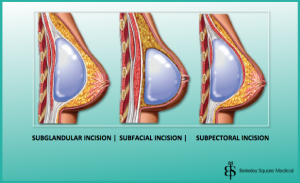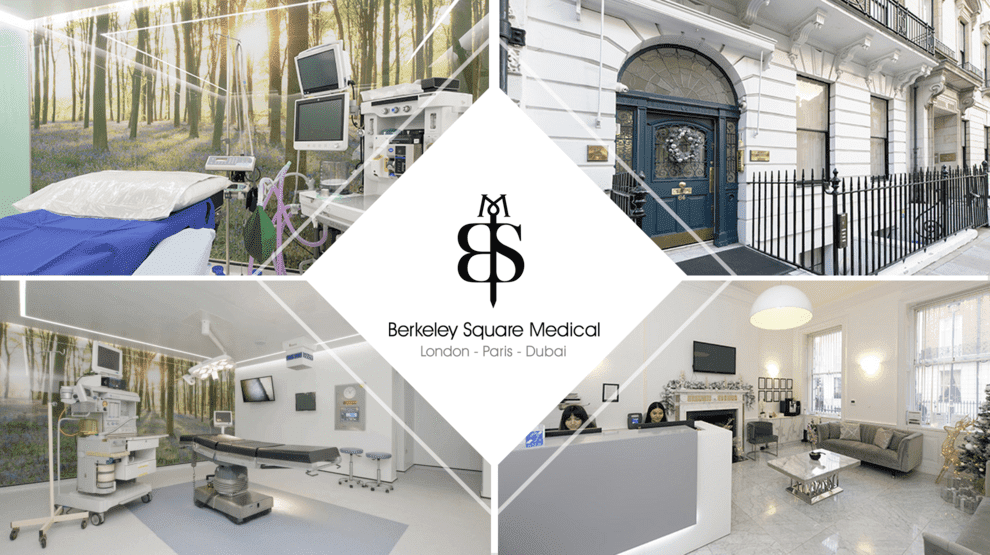 |
Breast Augmentation Cost
£6950.00
This is an All-Inclusive set price for this surgery and includes the full cost of your procedure including your £100.00 consultation which is credited against the cost of your surgery.

|
Consultation Cost:
£100.00
Your Consultation Is Credited When Booking Your Surgery.
|

|
All-Inclusive Care Included:
Complimentary Chauffeur Drive Home After Your Surgery Anywhere In London.
|
 |
Consultation:
Full Consultation With Your Consultant Plastic Surgeon.
|
 |
All Additional Items Included:
All Medication And Garments Provided To Take Home.
|
 |
Pre-Operative Assessment Included:
Pre- Operative (MRSA) tests all included
|
 |
After Care Service Included:
Online Messaging Service 24 Hours A Day Aftercare
|
 |
Hospital and Anaesthetic Fees Included:
Full Procedure And Stay At Our State Of The Art Hospital Included with Private Room.
|
 |
Post-Operative Appointments Included:
7-Day, 12-Week and 6-12 Month Post Operative Appointments.
|
FINANCE PACKAGES / COSMETIC LOANS
We do not provide Cosmetic Financing for this Surgery. When considering this surgery, we like to ensure the cost of your treatment is both transparent and clear to understand. The cost outlined above is fully inclusive of your completed procedure with no hidden costs. During your Breast Enlargement consultation, several important steps typically are performed:
-
Introduction and Discussion of Goals: The consultation begins with introductions between you and our Consultant Breast Surgeon. We would like to know your desires and goals for breast enlargement, including the desired size, shape, and overall appearance.
-
Medical History Review: Our surgeon will review your medical history, including any previous surgeries, medical conditions, allergies, and medications you are currently taking. This helps ensure that you are a suitable candidate for breast augmentation and identifies any potential risks or complications.
-
Physical Examination: A physical examination of the breasts is conducted to assess your current size, shape, symmetry, and skin quality. Measurements may be taken to determine the appropriate size and type of breast implants for your body.
-
Discussion of Options: Our Breast surgeon will discuss the various options available for breast enlargement, including different types of breast implants (such as saline or silicone), incision locations, placement of implants (above or below the muscle), and potential risks and complications associated with each option.
-
Visual Simulation: We may include the use of 3D imaging technology or sample implants to provide you with a visual simulation of what your breasts may look like after surgery. This can help you make informed decisions about your desired outcome.
-
Cost and Financial Considerations: A member of our clinic team will discuss the cost of the procedure, including surgeon’s fees, anesthesia fees, facility fees, and any additional costs associated with pre-operative tests or post-operative care.
-
Pre-operative Instructions: You will receive instructions on how to prepare for surgery, including any pre-operative tests that may be required, medications to avoid, and guidelines for eating and drinking before the procedure.
-
Questions and Concerns: You are encouraged to ask any questions or express any concerns they may have about the procedure, recovery process, or expected outcomes.
-
Scheduling Surgery: If you decide to proceed with breast enlargement, our clinical team will schedule a date for the surgery and provide instructions for what to do in the days leading up to the procedure.
Overall, your breast enlargement consultation is a crucial step in the process, allowing you to fully understand your options, make informed decisions, and feel comfortable moving forward with the procedure. Your surgery time usually takes between 30 minutes to 60 minutes.
Breast Enlargement is carried out under General Anaesthetic, which means you will be fast asleep for the full 60 minutes of the procedure.
-
Incision Placement:
- There are several options for incision placement, including:
- Inframammary Incision: A small incision is made in the fold underneath the breast.
- Periareolar Incision: The incision is made around the edge of the areola (the pigmented area around the nipple).
- Transaxillary Incision: The incision is made in the armpit, allowing for implant placement without any scars on the breasts themselves.
- Transumbilical Incision (TUBA): The incision is made near the belly button, and the implants are inserted through a tunnel created beneath the skin.
- The choice of incision depends on factors such as the patient’s anatomy, the type of implant being used, and the surgeon’s preference. The goal is to minimize visible scarring while providing optimal access for implant placement.

-
Implant Placement:
- Submuscular Placement:
- The surgeon creates a pocket beneath the chest muscle (pectoralis major).
- This technique may provide a more natural-looking result and lower the risk of capsular contracture (scar tissue formation around the implant).
- Subglandular Placement:
- The implant is placed behind the breast tissue but in front of the chest muscle.
- This technique may be suitable for patients with adequate breast tissue and minimal sagging.
- Dual-Plane Placement:
- A combination of submuscular and subglandular placement, where the upper part of the implant is covered by the chest muscle, and the lower part is behind the breast tissue.
- This technique is often used to address mild to moderate breast ptosis (sagging).
- Our surgeon carefully inserts the implants into the designated pockets, ensuring proper positioning and symmetry.
- Saline implants may be filled with sterile saline solution after placement, allowing for adjustment of volume and minor asymmetries.

Closing Incisions:
-
- Once the implants are in place, our surgeon closes the incisions with sutures, surgical tape, or skin adhesive.
- Special care is taken to ensure proper wound closure and minimize scar visibility.
Recovery and Post-Operative Care:
- You will be monitored in your private room until you are awake and stable.
- Instructions for post-operative care are provided, including wearing a surgical bra or compression garment, avoiding strenuous activities, and taking prescribed medications for pain and swelling.
After undergoing breast enlargement surgery, it’s crucial to follow proper aftercare instructions to ensure a smooth recovery and optimal results. Here’s a detailed guide on our breast enlargement aftercare:
-
Post-Operative Monitoring:
- After the surgery, you are typically monitored in a recovery area until you are awake and stable. Vital signs are checked regularly to ensure there are no immediate complications.
-
Pain Management:
- It’s normal to experience some discomfort, swelling, and bruising following breast enlargement surgery. Pain medication prescribed by our surgeon should be taken as directed to manage post-operative pain.
- Over-the-counter pain relievers may also be recommended to alleviate mild discomfort.
-
Wound Care:
- You should follow our surgeon’s instructions for caring for the incision sites.
- Keep the incisions clean and dry, and avoid exposing them to excessive moisture until they are fully healed.
- If surgical tape or bandages are applied, they should be changed as instructed by your surgeon.
-
Supportive Garments:
- You may be instructed to wear a surgical bra or compression garment to provide support to the breasts and minimize swelling.
- It’s essential to wear the recommended supportive garment as directed, even while sleeping, to promote proper healing and maintain the desired breast shape.
-
Activity Restrictions:
- You should avoid strenuous activities, heavy lifting, and vigorous exercise for a specified period following surgery.
- It’s important to gradually increase activity levels as tolerated, following the surgeon’s guidelines to prevent complications and ensure optimal healing.
-
Diet and Hydration:
- A healthy, well-balanced diet rich in nutrients can support the body’s healing process.
- Drinking plenty of water is important to stay hydrated and aid in the elimination of anaesthesia and medications from the body.
-
Follow-Up Appointments:
- Patients should attend all scheduled follow-up appointments with our surgeon to monitor their progress and ensure proper healing.
- During these appointments, our surgeon will assess the surgical sites, address any concerns, and provide further guidance on post-operative care.
-
Scar Management:
- While some scarring is inevitable after breast enlargement surgery, there are steps that can be taken to minimize its visibility.
- Patients should follow the surgeon’s recommendations for scar management, which may include applying silicone gel or sheets, massaging the scars, and avoiding sun exposure to the incision sites.
-
Physical and Emotional Well-Being:
- Breast augmentation surgery can have both physical and emotional effects on patients. It’s essential to prioritize self-care and seek support if needed during the recovery process.
- Patients may experience a range of emotions, including excitement, anxiety, or temporary dissatisfaction with the initial appearance of their breasts. Open communication with the surgeon and support from friends and family can help navigate these feelings.
-
Risks and Complications:
- While complications are rare, patients should be aware of potential risks associated with breast enlargement surgery, such as infection, bleeding, implant rupture, capsular contracture, changes in nipple or breast sensation, and the need for additional surgeries.
- Any unusual symptoms or concerns should be promptly reported to the surgeon for evaluation and management.
By following these aftercare guidelines and maintaining open communication with their surgeon, patients can promote a smooth recovery and achieve the desired outcomes from breast enlargement surgery.
We want to ensure that you can get home safely. For this reason all Breast Enlargement patients are chauffeur driven home complimentary as apart of our aftercare to you.
THE FIRST 24 HOURS AFTER SURGERY
You will feel slightly drowsy from the anaesthesia until it wears off. At this point, any swelling to the breasts will be at its highest and your upper body movement will be quite limited while the swelling slowly decreases.
THE FIRST 3 DAYS AFTER SURGERY
You will still feel slightly tired after a few days and this is generally due to the temporary change to sleeping completely on your back without rolling. You may have a slight feeling of tightness around your breasts. This is while your skin expands gently to your new breast shape and size. Adjusting to the new breast weight/size may change your breathing pattern slightly while you get accustomed to the new you.
You may notice a reduced nipple sensation during the immediate recovery, but this should return over the coming weeks. In the first 7 days, your support bra must be kept on at all times to help your new breasts stay in place while healing.
Pain and Discomfort are generally very low and can be managed with over-the-counter medication. In rare cases, you may feel small spasms in the breast due to nerve healing.
5 DAYS AFTER SURGERY
You should be able to return to non-physical work after 5 days from the procedure but must avoid any strenuous activities. Your breast may still be slightly swollen, though this will not cause you any major discomfort in your daily movement by this time.
7 DAYS AFTER SURGERY
You will return to the hospital for your post-operative review, in which any stitches are removed. Though the surgeon uses dissolvable stitches, we will check to make sure your incisions have healed. You will also be assessed for any leftover swelling and any advice to help improve your recovery time.
14 DAYS AFTER SURGERY
You can start to resume light gym and cardio in moderation. You should not lift any heavy objects or go swimming /spa until 6 weeks after your surgery.
Your results are instantly visible after surgery, but you must allow between 4-6 months before the implants have fully settled into place. During this time your breasts will be adjusting into place.
1 YEAR AFTER SURGERY
As a part of your aftercare, we advise all patients to book in once a year to see their surgeon for a brief assessment of the consistent results. Breast enlargement surgery, like any surgical procedure, carries certain risks and potential complications. While the vast majority of patients undergo breast augmentation without experiencing serious issues, it’s essential to be aware of the potential risks involved. Here are some of the risks associated with breast enlargement surgery:
-
Infection: There is a risk of developing an infection at the incision sites or around the breast implants. Infections can typically be treated with antibiotics, but in severe cases, implant removal may be necessary.
-
Bleeding: Excessive bleeding during or after surgery is a potential complication. This risk is usually minimized by careful surgical technique and proper post-operative care.
-
Capsular Contracture: Capsular contracture occurs when scar tissue forms around the breast implant, causing it to become firm and potentially distorted in shape. This can result in discomfort and changes in breast appearance. Additional surgery may be required to correct this issue.
-
Implant Rupture or Leakage: Breast implants can rupture or leak over time, leading to changes in breast shape, size, and texture. Saline implants usually deflate rapidly if they rupture, while silicone gel implants may require imaging tests to detect silent ruptures.
-
Changes in Breast Sensation: Some patients may experience temporary or permanent changes in nipple or breast sensation after breast enlargement surgery. This can include numbness, hypersensitivity, or altered sensation in the breasts or nipples.
-
Scarring: Although efforts are made to minimize scarring, all surgical incisions carry the risk of visible scars. The extent and visibility of scarring can vary depending on factors such as incision placement, skin type, and individual healing characteristics.
-
Symmastia (Uni-boob): Symmastia occurs when the breast implants move too close together, creating a conjoined appearance in the midline of the chest. This can result in an unnatural-looking breast contour and may require corrective surgery.
-
Implant Malposition: Breast implants may shift from their intended position over time, leading to asymmetry, bottoming out (implants sitting too low on the chest), or lateral displacement. Revision surgery may be needed to reposition the implants and improve breast appearance.
-
Anaesthesia Risks: General anaesthesia carries inherent risks, including allergic reactions, respiratory issues, and adverse reactions to medications. Patients should discuss their medical history and any concerns with their anaesthesia provider before surgery.
-
Psychological Impact: While not a physical risk, it’s essential to consider the potential psychological impact of breast enlargement surgery. Unrealistic expectations, post-operative dissatisfaction, or body image concerns may arise and should be addressed with the surgeon before undergoing the procedure.
It’s important to thoroughly discuss the risks and benefits of breast enlargement surgery with our plastic surgeon before making a decision. Additionally, choosing a consultant plastic surgeon with extensive experience in breast augmentation can help minimise the likelihood of complications and ensure a safe and successful outcome. |













